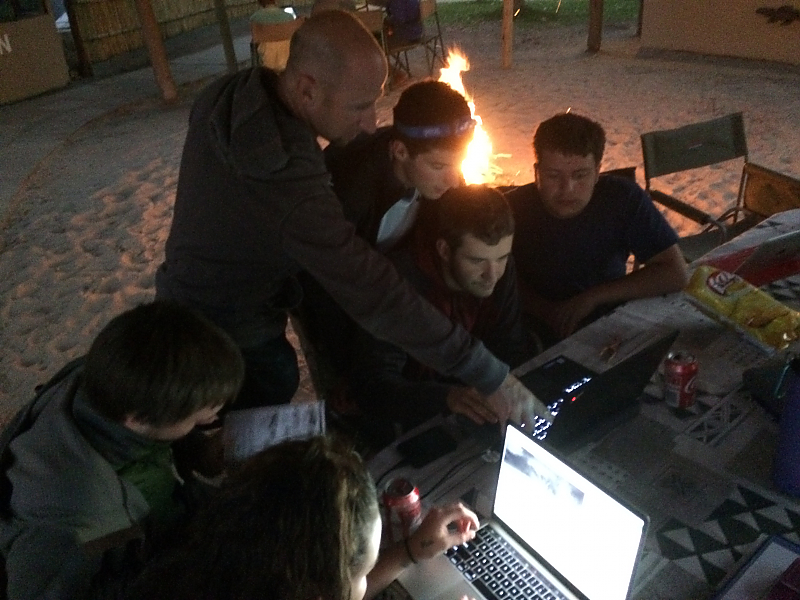Dispatches from Botswana
Students are immersed in their Natural Science course, Field Studies in Wildlife Conservation here in Botswana. They are learning about wild life conservation techniques and what must be considered when setting up a wildlife conservation plan. Students are having the opportunity to practice the techniques in the field and tonight were able to see the results from the camera traps which they set up in Orapa and have begun recording and analyzing the data. Over 3000 photos were taken by the cameras. I don't know the species count, but there were leopards, oryx, jackals, rhinos, eland, impala, springbok, zebras and more. While lectures and tests are part of the course, students are immersed in the field, which means we are spending a fare bit of time in the game viewers and other vehicles getting to and fro the wildlife areas. Our ride from Maun to Sepopa took longer than expected due to road conditions (lots of big potholes), so we will visit Tsodillo Hills in the morning as we make our way up into the Delta. They had a chance to our overnight at Swamp Stop which is located on the bank of the river. Seven foot tall papyrus grass (used by the villagers to make the reed fences which enclose their living areas) located on the banks of the narrow channel. Internet access will be spotty at best over the next seven days. I'll post as often as I can.
(Had a photo here but it disaapeared)
Rachel Langlois
8/12/17
Blog entry: Today our group met with community members from Seronga and other nearby areas including Eretsha.
(Lucky) lucky was the first community member we met he works for the Department of Wildlife and National Parks. He talked to our group for only about ten minutes because he had to attend to an elephant poaching case. The next community member we met his name was (Total) Total is an environmental officer for the Okavango Community Trust. He has worked there for twelve years. The Okavango Community Trust is made up of community members, board members, and employees. They receive support from the government to carry out conservation efforts. They monitor wildlife, endangered speciess, vegetation and more. They also are involved in many community development projects which meet the needs of the community, such as running a pre-school in the village of Eretsha where we are staying. The last guy we met was Mr. Katezuro who is a community member, a former government employee, and now a business man. He benefits from his shop, his safari lodge, and his butcher shop. because he owns his own livestock he understands the balance between being a livestock owner and owning a safari lodge which depends on the wildlife.
More later ........










